DeconstructingBuyology:remaking to resist in an age of consumption
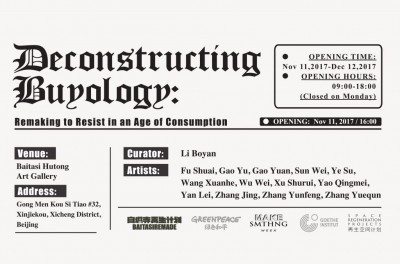
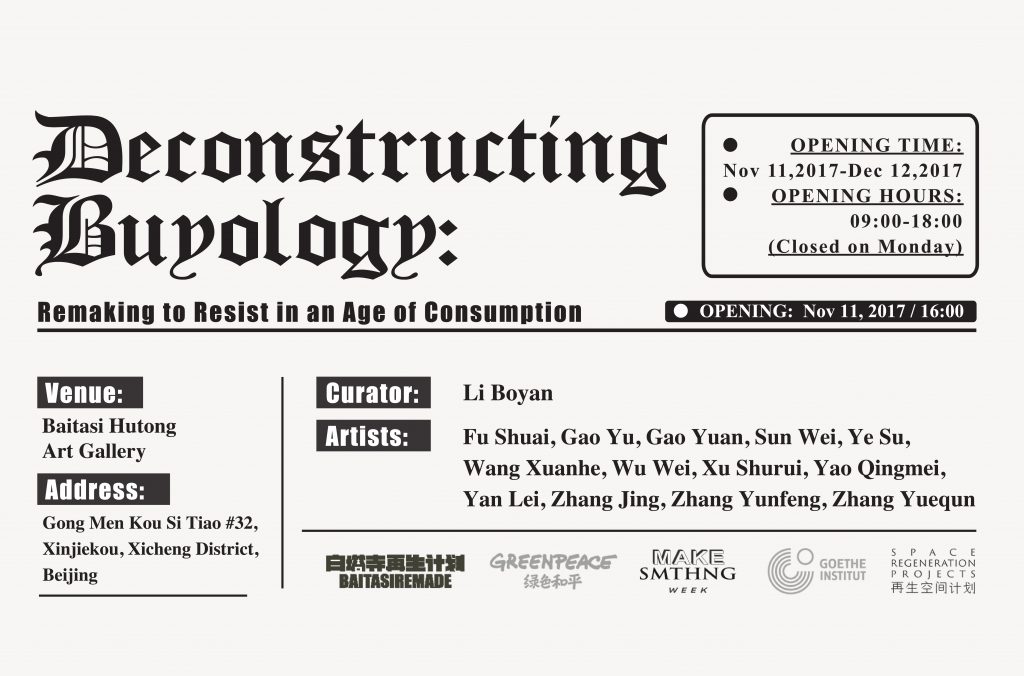
贫穷剧场:抗拒消费时代的重造
Deconstructing Buyology: remaking to resist in an age of consumption
策展人:李泊岩
艺术家:付帅、高宇、高元、孙伟、耶苏、王轩鹤、伍伟、徐书瑞、姚清妹、颜磊、张静、张云峰、张悦群
11.11-12.12(09:00-18:00)每周一闭馆
白塔寺胡同美术馆(北京市西城区,新街口街道,宫门口四条32号)
Curator: Li Boyan
Artists: Fu Shuai,Gao Yu, Gao Yuan, Sun Wei, Ye Su, Wang Xuanhe, Wu Wei, Xu Shurui, Yao Qingmei,Yan Lei, Zhang Jing, Zhang Yunfeng, Zhang Yuequn
Nov. 11-Dec. 12(09:00-18:00)Closed on Monday
Baitasi Hutong ArtGallery(Gong Men Kou Si Tiao #32, Xinjiekou, Xicheng District,Beijing)
图像在网络讯息中的快速、泛滥的传播,在消费过程中迷惑着人们的眼球,深刻地干预了大众的消费观。广告以一种“仿真”的姿态宣告了一种特属于消费时代的新艺术的诞生。“逼真的诱惑”使人们倾向于相信网络转播作为新媒体具备可信赖的真实性,这一境况部分地解释了为何公众人物的隐私会在网络中不断被放大、被娱乐和被消费。从“水门事件”到法国前总统萨科齐夫人布吕尼的艳照曝光,从“911”事件到“马航”事件,一种媒体左右的民主自由快速发展。对此,即便是隐私权这样的个人权利似乎也陷入了无可奈何的尴尬境地。
然而,经济全球化时代的权力象征又来自于大众消费。景观社会所缔造的大量奇观,在消费时代之前是难以想象的。在新旧景观林立的大都市,一种适度、兼容的态度逐渐形成:原住民的视角审视家乡和外来人闯入这座城市的感受,演变成了截然不同的生活状态,在两者并存的空间里,身份的认同又成为潜意识中的共同焦虑。经济全球化的带动下,世界语言逐渐抹平了地域的、民族的那些色彩非凡的文化。消费时代的“创造”越来越寓言化,成为了以“虚拟”形式进行的将一切与消费进行捆绑的真实实践。其“虚拟”在于,这一实践借助的是对符号的挪用和二次编码;其“真实”则在于,这一套符号层面的实践着实对我们造成了真切和深刻的影响。因此,透视一种消费时代的“创造”,需要大量的解码工作。
空虚的、理性的行动诞生于消费焦虑的阵痛并一直伴随左右,成为了新的不合作的抵抗形式。加拿大录像艺术家特德•戴夫(Ted Dave)于1992年发起了名为“全球罢买日”(Buy Nothing Day)的游行活动。在感恩节的后一天,抵抗过度消费的民众自觉拒绝消费并组织游行,形成了消费时代以来特有的一个“节日”。在“有多少东西是我真正需要,而非想要的”思考下,这个行动得到了广泛的追捧。反消费以一种“不合作运动”式的态度激发了“新穷人”对于“消费社会”的抵抗。基于上述考虑,我们在个人空间和消费空间之间的缝隙中构建起一个贫穷的剧场,以让穷人在无法脱离消费时代和生活习惯的空间中变得更独立、更自治,以适应大城市中新的社群变化所带来的冲击。
从社群到城市景观,反消费行动将矛头直指快速的城市变革进程。艺术作为创造,越来越转向区域化行动:一方面抵抗经济全球化所带来的同化作用,另一方面也体现出越来越自信的本土文化生态。犹如当代社会生产出大量有待处理的废弃物,都市中的“飞地”也就如同蛀牙一般,急需进行填补以实现功能的再生和更新。不论是闲置的“偶得空间”,还是积极推进改造的白盒子空间,都给予了落寞的社区以自发创造的动力。社区共建在反过度消费的思潮中,也由此有了更具积极意义的态度。
社区为艺术与普通民众搭建了连结互动的平台。在西方,由政府和民间组织共建的独立空间、驻地项目活化了在美术馆之外发生着的艺术,为正当下的事件提供了讨论和反思的场所。而艺术的活化可能性,又回馈给社区。当然这并非以推倒重来的方式,而是通过时间的持续和具体艺术内容的呈现,带来新的即“再生”的景观。
“再生”为合理推动社区的健康演变提供了新的可能性。再生也是反抗和化解过度消费和浪费的态度。在展览中,临期食品、快餐、废弃纸板会成为装置作品的材料,在废旧电视中展示了艺术家针对社会剧场的朗读,还有一部分作品直视消费对城市环境造成的压力,此外更多的作品揭示了视觉消费产生的再造,以及抗拒消费时代的重新创造。
Images spread rampantly on the internet, dazzling human eyes during the consumption process, and exert profound influence on consumers’ viewpoints. Advertising, posing itself as simulated reality, announced the beginning of a new art belonging to the consumption age exclusively. “True to life temptation” makes it possible for people to regard internet based sharing as new media, and therefore trustworthy, which partially explains why private matters of public figures could be exaggerated, entertained and consumed interminably on the internet. From “Water Gate” to the exposure of the nude photos of Carla Bruni, wife of former French President Nicolas Sarkozy, from “911” to “MH370” accident, a kind of democracy and freedom manipulated by media has been developing rapidly. Even the matter of privacy as a human right falls into a helpless and awkward situation.
Yet, the symbol of power in the age of economic globalization comes from mass consumption. The large amount of wonders created by the society of spectacle is something impossible to imagine before the age of consumption. In metropolises where it stands a forest of both new and old spectacles, an attitude of moderation and compatibility is gradually building up: the perspective to examine the home city as a native and the feelings of outsiders who burst into the city have turned into two distinct states of life. In the space of the two’s coexistence, identity has become a shared anxiety in people’s subconscious. Led by economic globalization, world language has been gradually erasing the splendid cultures which are reginal and ethnic. The “creation” in the age of consumption is gradually allegorized, becoming a realistic practice conducted in the “virtual” way tying up everything with consumption. Its “virtuality” lies in its practice being assisted by appropriation and re-coding of symbols; its “reality” locates in the practice’s factual and profound influence on us at the symbolic level. Therefore, to see through the “creation” in the age of consumption, significant decoding is needed.
Vacuous and rational action was born in the pain of consumption anxiety, which has been its company ever since, turning into new forms of uncooperative resistance. Ted Dave, a Canadian video artist, started a protesting procession “Buy Nothing Day” in 1992. On the next day after Thanks-giving, to protest against consumerism, people willingly refused to buy things and organized a procession, becoming a special “festival” in the age of consumption. Based on the reflection “what are the things I really need, instead of desiring”, the activity was widely welcomed. Anti-consumerism encourages the “new poor” to protest against the society of consumerism in the way of “uncooperative movement”. Building upon the above understanding, we construct a Playhouse of Poverty in the rift between individual space and consumption space, to make the poor more independent and autonomous in the space of their living habits and the age of consumption, from which they cannot escape, in order to adapt to the new impact brought by a community’s change in a large city.
From the community to the spectacle of the city, anti-consumerism actions are directed at the rapid urban change. Art as a creation is increasingly turning into regional action: on one hand, it resists the homogenization brought by economic globalization, on the other, it reflects the growing confidence in the native cultural ecology. Similar to the large quantity of wastes, produced by contemporary society and waiting to be disposed, “enclaves” exist in the city like cavities, in urgent need to be filled to gain functional regeneration and renovation. Whether it is a spare “fortuitous space”, or a white-box area under active transformation, it injects the desolate community with the motivation to create. Community building acquires more positive significance in the trend of anti-consumerism.
Community provides the platform for art and general public to connect and interact. In the West, independent spaces and artist residential projects, co-built by governments and non-governmental organizations, breathe life into art which are happening outside galleries, providing spaces for discussion and reflection on current events. In turn, the possibility of art revitalized would reciprocate the community. Of course, this is not to advocate to scrape everything and start all over again. It depends on continuous efforts made for a significant duration of time and the presentation of specific works of art, to bring new, which is “regenerated”, spectacles.
“Regeneration” offers new opportunities to promote healthy development for communities. Regeneration is also the attitude of both resistance against and solution for over consumption and waste. In the exhibition, food with validation about to expire, fast food, and wasted cartons would be used as materials for installations; readings made by artists about social theatre would be broadcasted using old televisions; some art works confronts the pressure put on the city’s environment by consumption; more works reveal the reproduction made by visual consumption, as well as the anti-consumerism re-creation.
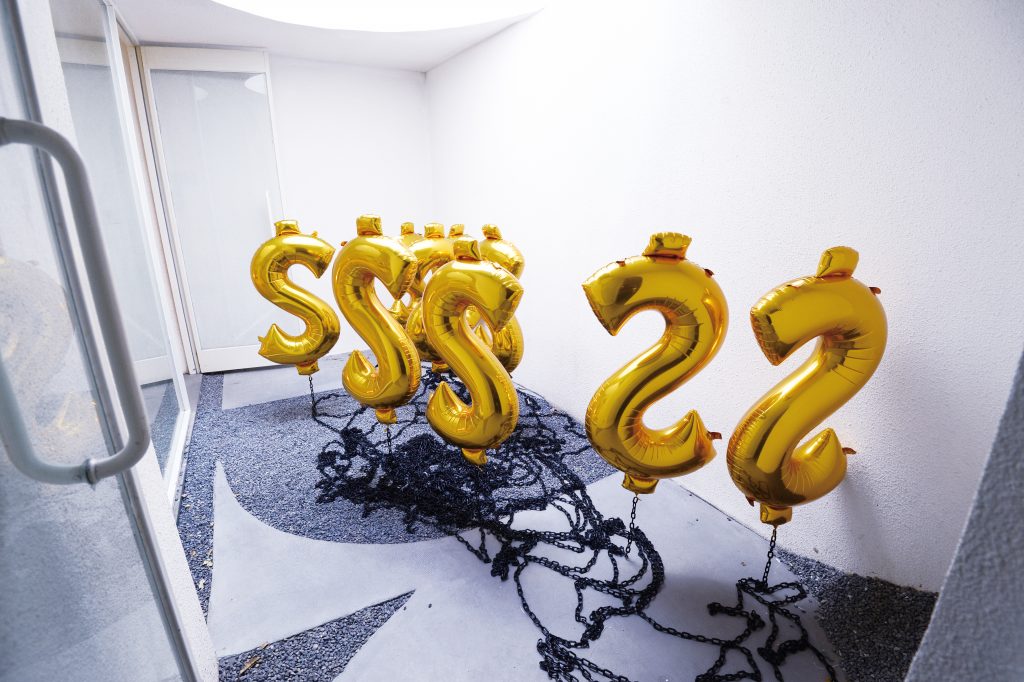
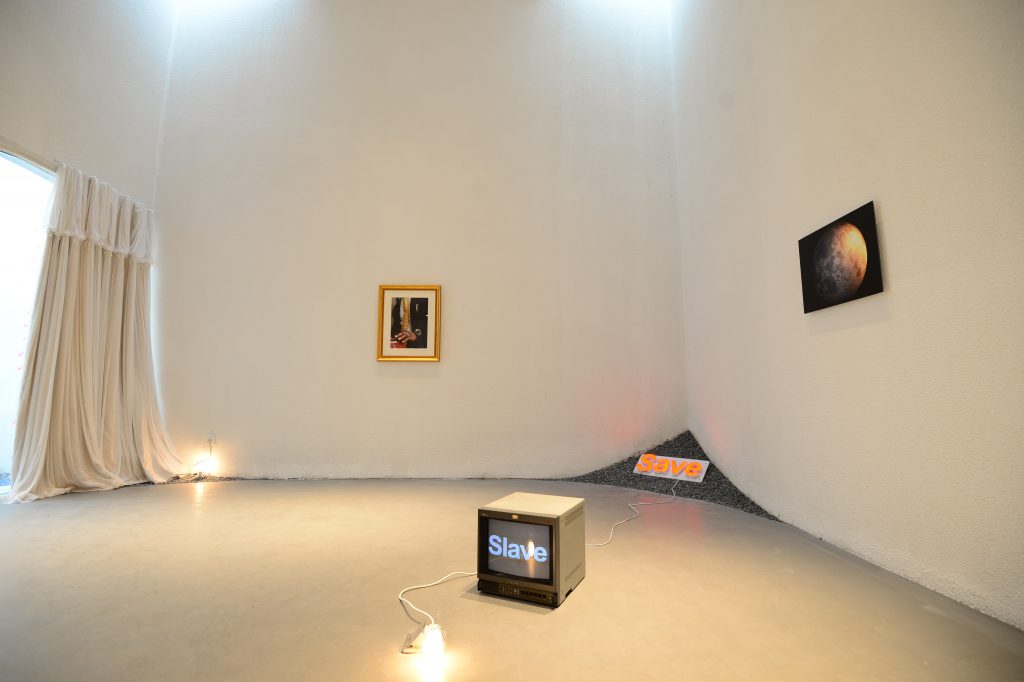
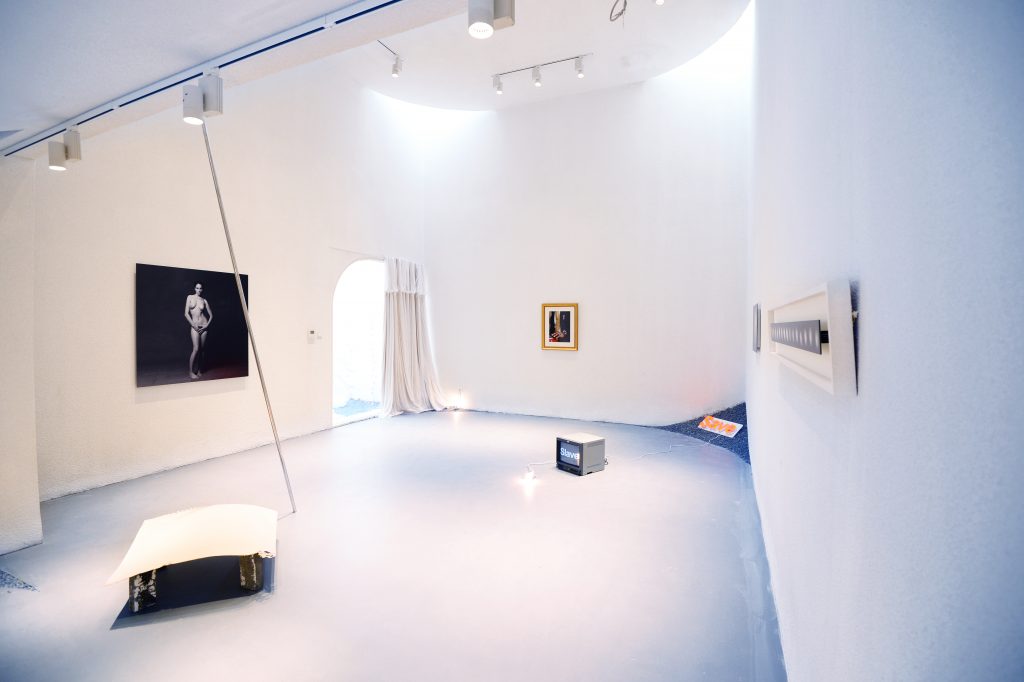
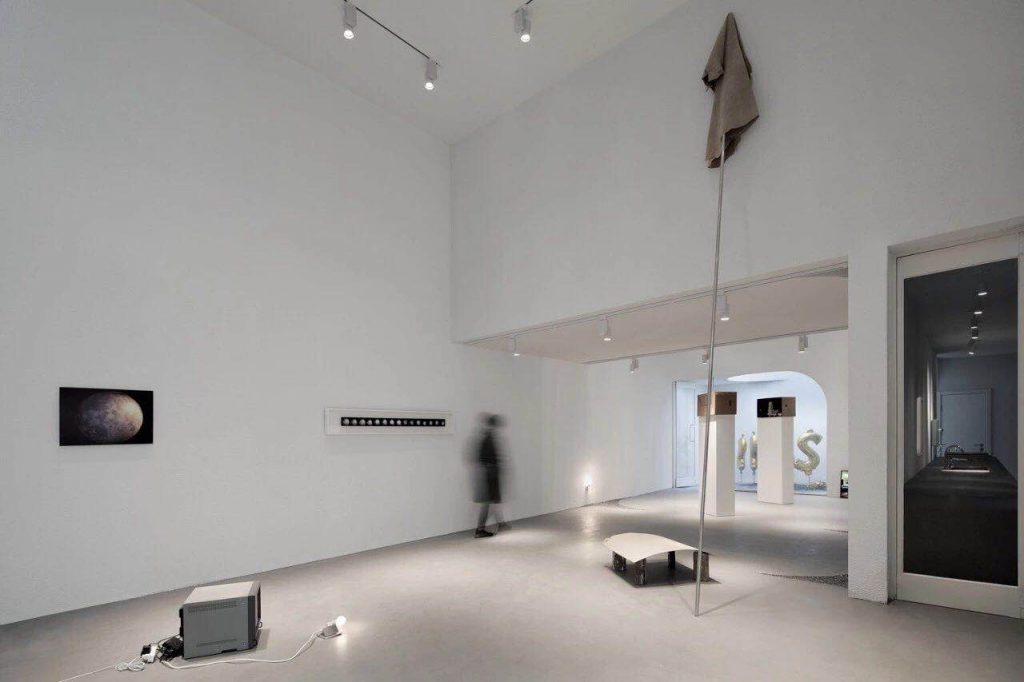
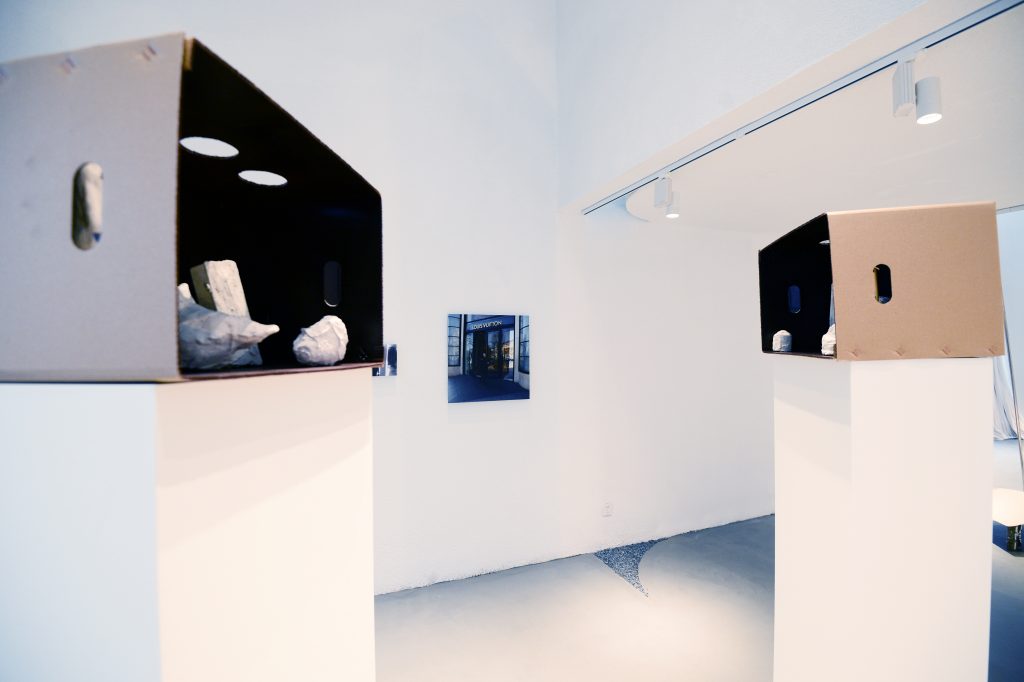
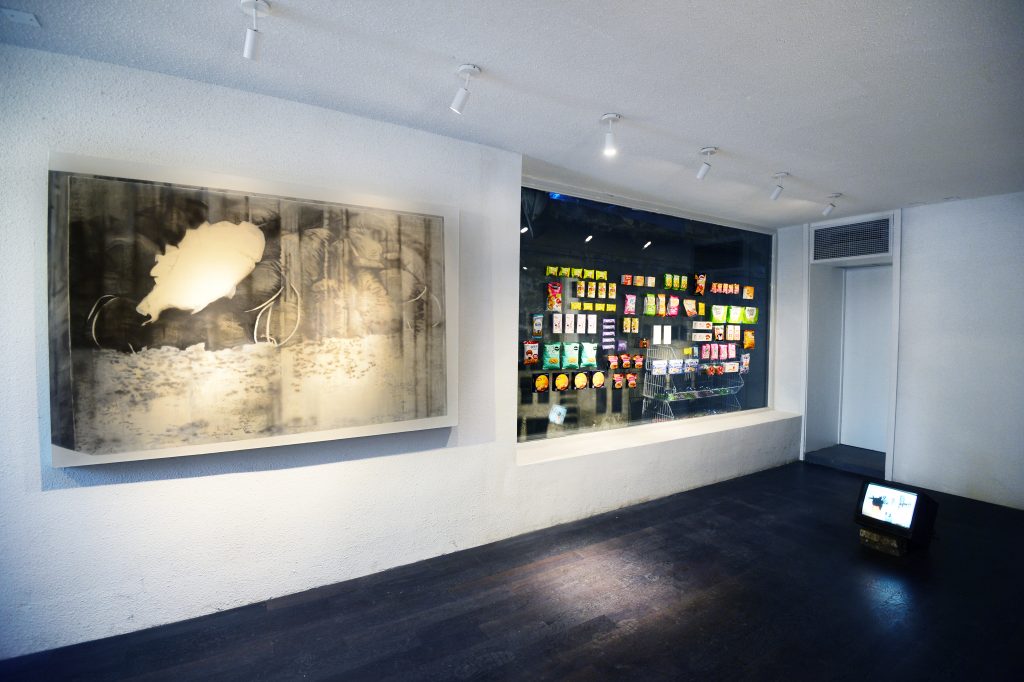
more:
歌德学院(中国)灰盒子放映 | 贫穷剧场: 唱给那些消费自己的人